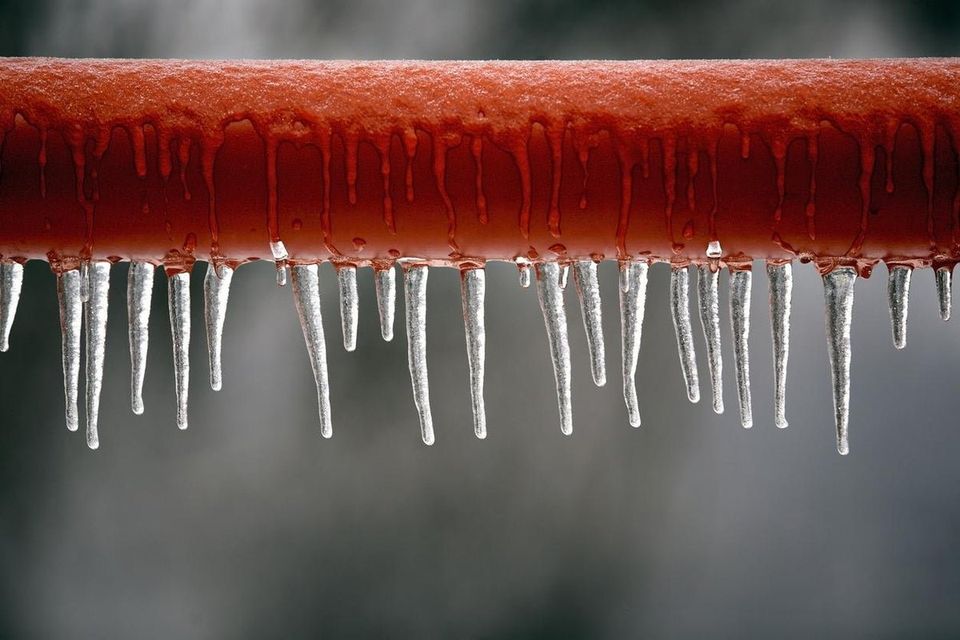Protecting Against Frozen Pipes in Winter: Professional Tips
Protecting Against Frozen Pipes in Winter: Professional Tips
Blog Article
The article author is making several good observations about How to prepare your home plumbing for winter weather as a whole in this article further down.

Winter can wreak havoc on your pipes, particularly by freezing pipelines. Below's how to avoid it from taking place and what to do if it does.
Intro
As temperature levels decrease, the risk of icy pipes boosts, potentially causing costly repair work and water damage. Recognizing exactly how to stop frozen pipes is vital for house owners in cool environments.
Avoidance Tips
Shielding prone pipes
Cover pipelines in insulation sleeves or utilize warm tape to safeguard them from freezing temperature levels. Concentrate on pipelines in unheated or outside locations of the home.
Heating techniques
Keep indoor spaces properly heated, particularly areas with pipes. Open closet doors to enable warm air to circulate around pipelines under sinks.
Exactly how to determine frozen pipelines
Seek lowered water circulation from faucets, unusual odors or sounds from pipelines, and visible frost on subjected pipes.
Long-Term Solutions
Structural modifications
Take into consideration rerouting pipelines away from exterior walls or unheated areas. Include additional insulation to attics, basements, and crawl spaces.
Updating insulation
Invest in top quality insulation for pipelines, attics, and walls. Appropriate insulation helps preserve consistent temperature levels and decreases the threat of icy pipelines.
Securing Exterior Plumbing
Garden pipes and outside taps
Detach and drain yard tubes before winter season. Mount frost-proof spigots or cover outside faucets with shielded caps.
Comprehending Frozen Pipes
What causes pipelines to freeze?
Pipelines ice up when exposed to temperature levels below 32 ° F (0 ° C) for prolonged durations. As water inside the pipes freezes, it broadens, putting pressure on the pipe wall surfaces and possibly creating them to rupture.
Dangers and problems
Icy pipelines can bring about water interruptions, home damage, and pricey repair work. Burst pipes can flood homes and create extensive architectural damages.
Indications of Frozen Piping
Identifying frozen pipes early can prevent them from breaking.
What to Do If Your Pipes Freeze
Immediate activities to take
If you presume icy pipes, keep taps open up to alleviate stress as the ice melts. Use a hairdryer or towels taken in hot water to thaw pipelines slowly.
Conclusion
Stopping frozen pipelines requires positive actions and quick actions. By recognizing the causes, indicators, and safety nets, house owners can protect their plumbing during cold weather.
5 Ways to Prevent Frozen Pipes
Drain Outdoor Faucets and Disconnect Hoses
First, close the shut-off valve that controls the flow of water in the pipe to your outdoor faucet. Then, head outside to disconnect and drain your hose and open the outdoor faucet to allow the water to completely drain out of the line. Turn off the faucet when done. Finally, head back to the shut-off valve and drain the remaining water inside the pipe into a bucket or container. Additionally, if you have a home irrigation system, you should consider hiring an expert to clear the system of water each year.
Insulate Pipes
One of the best and most cost-effective methods for preventing frozen water pipes is to wrap your pipes with insulation. This is especially important for areas in your home that aren’t exposed to heat, such as an attic. We suggest using foam sleeves, which can typically be found at your local hardware store.
Keep Heat Running at 65
Your pipes are located inside your walls, and the temperature there is much colder than the rest of the house. To prevent your pipes from freezing, The Insurance Information Institute suggests that you keep your home heated to at least 65 degrees, even when traveling. You may want to invest in smart devices that can keep an eye on the temperature in your home while you’re away.
Leave Water Dripping
Moving water — even a small trickle — can prevent ice from forming inside your pipes. When freezing temps are imminent, start a drip of water from all faucets that serve exposed pipes. Leaving a few faucets running will also help relieve pressure inside the pipes and help prevent a rupture if the water inside freezes.
Open Cupboard Doors
Warm your kitchen and bathroom pipes by opening cupboards and vanities. You should also leave your interior doors ajar to help warm air circulate evenly throughout your home.

I discovered that article about Winter Plumbing Precautions: Preventing Frozen Pipes while doing a lookup on the web. For those who enjoyed our article plz don't forget to share it. Thanks so much for your time invested reading it.
This Site Report this page